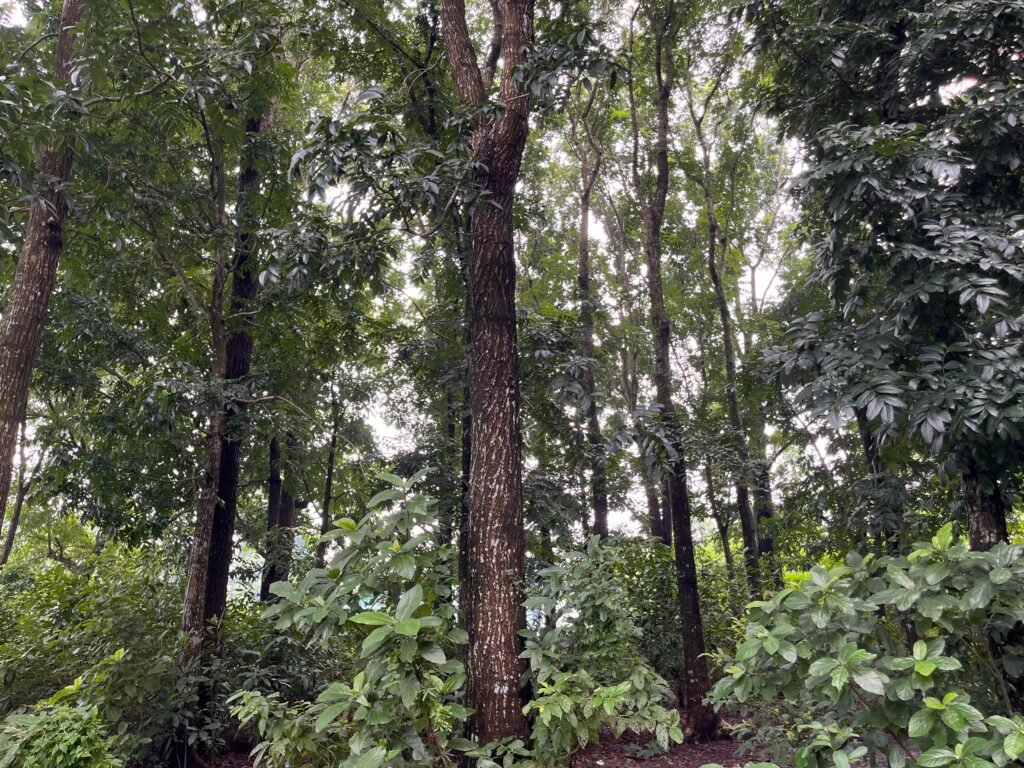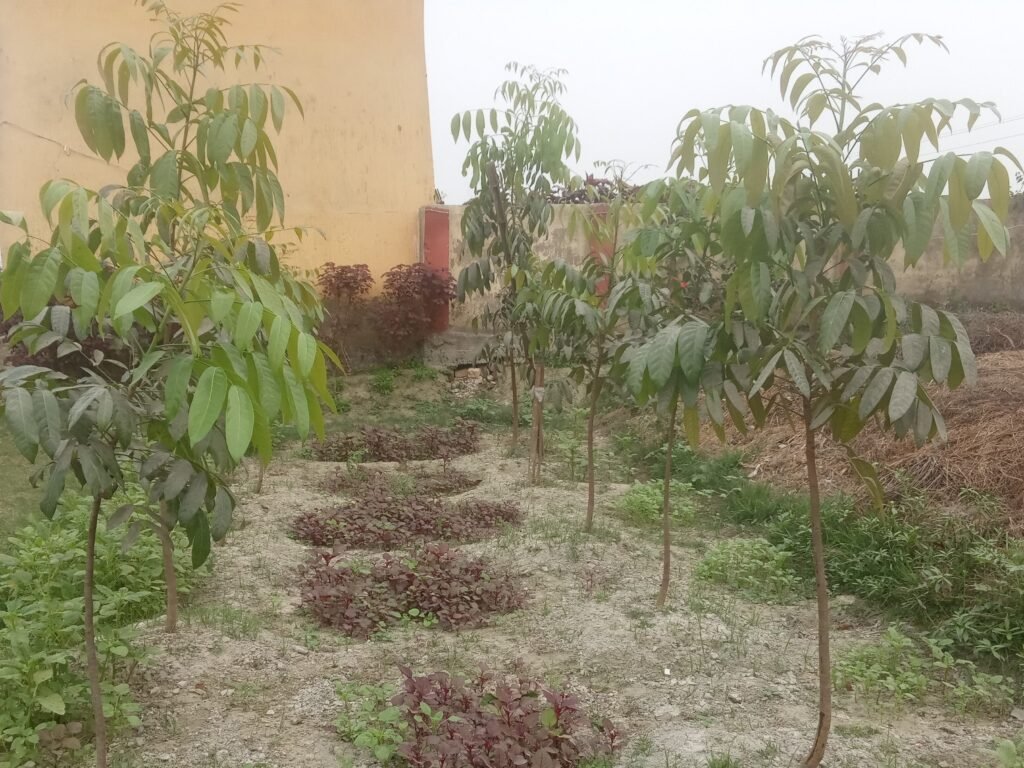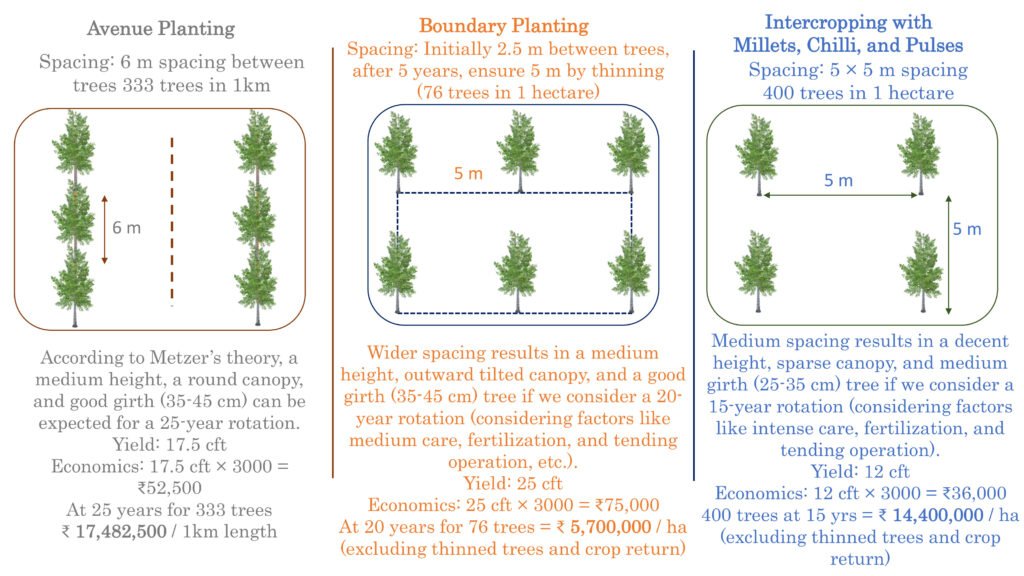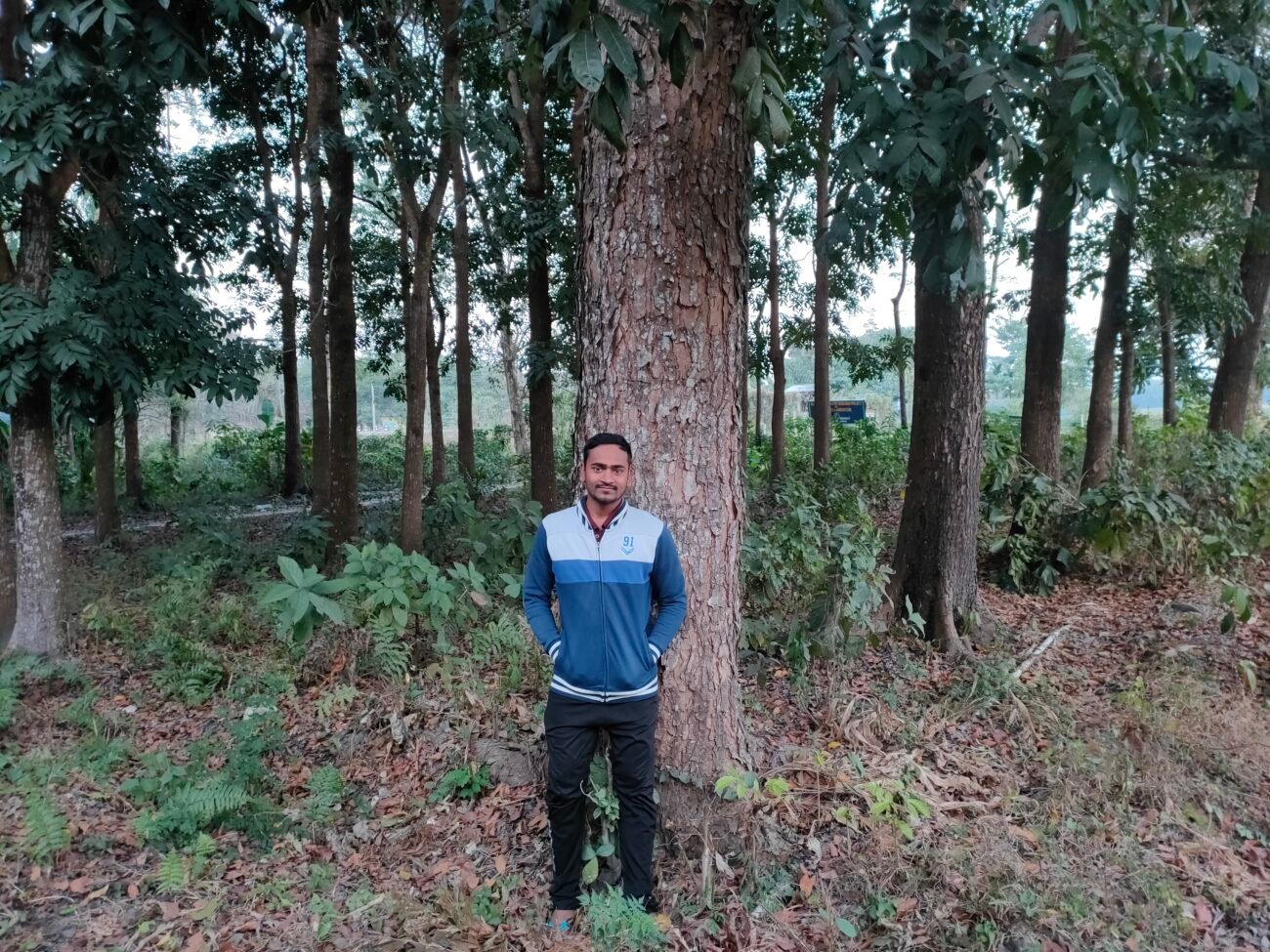Introduction
Recently, I have come across several newspapers, blogs and YouTube channels promoting Mahogany as a “million-dollar business”, claiming high returns within 5-10 years. However, most of these claims lack scientific evidence and practical research support. This provoked me to write a blog to provide realistic insights into Mahogany cultivation and its actual commercial returns.
Am I the right person to speak on this subject? Yes, because it is important to share my research background and experience in forestry to present an evidence-based perspective on the commercial potential of Mahogany, in a practical sense. I specialize in forestry and have had research work on Mahogany during my MSc (Forestry). Since 2016, I have observed a growing demand and interest in mahogany and other commercial tree cultivation in India. Mahogany is fast-growing with high-quality timber, making it ideal for commercial agroforestry, avenue, and boundary plantations. As compared to teak, mahogany is a fast-growing, self-pruning species that adapts easily to agroforestry systems and space, nutrient, and resource-adjusted management, while producing straight and knot-free commercial timber.
Before exploring its cultivation and commercial aspects, it is important to first understand what Mahogany is and why it holds significance.
What is Mahogany?
Mahogany refers to several species of tropical hardwoods belonging to the genus Swietenia, prized for their reddish-brown color, fine grain, and exceptional durability. There are three species of Swietenia, namely Swietenia macrophylla (Honduran or big-leaf mahogany), Swietenia mahogani (West Indian or Cuban mahogany), and Swietenia humilis (Dwarf mahogany). Swietenia humilis is not commercially popular because it is a smaller, slower-growing tree that produces limited timber volume.
Timber traders sell certain other tree species as mahogany, along with the genuine one. “African mahogany” refers to five Khaya species native to Africa and Madagascar. “Philippine mahogany” refers to seven dipterocarp species from the genera Shorea and Parashorea, commonly known as meranti. Toona ciliata or “Indian mahogany” differs noticeably in appearance despite sharing similar properties with mahogany.
In India, farmers commonly grow Swietenia macrophylla in the northern region, while people cultivate Swietenia mahagoni in the south. Craftsmen call Swietenia trees the “Wood of Kings” because their rich color, fine grain, and durability made them the preferred choice for royal furniture, palaces, and luxury interiors, symbolizing elegance and prestige. Known for its durability, beauty, and high market demand, it has become a popular choice for farmers looking to diversify their income. But beyond its timber value, mahogany farming offers additional benefits like soil enrichment, carbon sequestration, and long-term sustainability. People have long used this tree in ethnomedicine to cure a variety of ailments, including high blood pressure, diabetes, malaria, and hypertension.
In this step-by-step guide, we explore whether mahogany tree farming is truly profitable. From plantation management to ecological advantages and market prospects, this blog helps you understand how mahogany can be both a smart investment and a sustainable farming practice.

Cultivation Practices
Soil and Climatic Requirements:
Mahogany thrives in tropical and subtropical climates with a temperature range of 22-32°C and 700-3000 mm annual rainfall. It prefers well-drained, deep, and fertile loamy soils. Ensure the soil is slightly acidic to neutral (pH 6-8).
Planting Material: There are two methods to select planting materials. If you have time and resources, you can produce your healthy seedling by following the steps below.
- Select seeds from healthy, mature, superior fruits and remove the seed wing by simply breaking them by hand.
- Soak the selected dewinged seeds in normal or cold water for 48 hours.
- Prepare nursery beds (10 m × 1 m) using a mixture of soil:sand: farmyard manure in a 1:1:1 ratio.
- Pulverize and sieve the nursery soil to remove root splinters and other foreign material, and then use the same soil to fill polybags.
- Treat the nursery beds with an insecticide (e.g., chlorpyrifos 20 EC) at 3 ml per litre to protect against ants, apply according to the label, and use proper PPE.
- Sow sterilized/pretreated seeds in the prepared nursery beds at 10 cm × 10 cm spacing.
- Or sow seeds in polybags (20 × 30 cm) filled with about 4.3 kg of the pulverized nursery soil under open-field conditions.
- Maintain the nursery: provide regular watering, shading, weeding, and pest/disease monitoring.
- After one month, select healthy, uniform seedlings based on collar diameter and height.
- Transplant the selected seedlings into polybags (if not already in bags) and continue nursery care until they are ready for field planting.
- Apply nitrogenous fertilizer at the rate of 300 kg N/ha to improve survival and growth in the field.
“Otherwise, you can directly purchase healthy mahogany seedlings from a reliable nursery, but be cautious, many nurseries in India exaggerate quality and growth claims, so ensure you source from trusted, authentic suppliers to avoid being misled.”
Planting and Spacing
Land Preparation: Clear the land of weeds, shrubs, and debris. Plow the soil deeply and harrow it to ensure proper aeration and root penetration.
• Planting Time: The best time for planting is at the onset of the monsoon season (June-July) to ensure ample water availability.
• Spacing: Maintain a spacing of 4×4 meters or 5×5 meters under agroforestry system. High-density planting of 2.5 X 2.5 meters (row x plant) can be followed for the plantation.
Water Management: Ensure regular watering during the first two years after planting, especially in dry periods. Implement drip irrigation to maintain soil moisture without waterlogging.
Nutrient Management: Apply organic manure or compost during planting. A balanced NPK (Nitrogen, Phosphorus, Potassium) 10:10:10, 20:20:20, or 30:30:30 labelling is the best fertilizer dose that can be applied annually to promote healthy growth. Slow-release Nitrogen fertilizers are best for tree growth. Farmers should be applying 100- 200 g of fertilizer per tree.
Pest and Disease Management: Monitor for pests such as mahogany shoot borers and defoliators. Implement integrated pest management (IPM) practices, including biological controls and neem-based insecticides. Chlorpyriphos as liquid of 4 ml/litter of water should be used for controlling the fungus and termites and other pest. Watch for signs of fungal infections and root rot. Ensure proper drainage and avoid overwatering.
Pruning and Thinning: Prune young trees to remove dead or diseased branches and to shape the canopy. Conduct thinning operations to reduce competition and promote the growth of selected trees.
Harvesting: Mahogany trees typically mature for timber harvest after 20-30 years. However, selective harvesting of older trees can be done earlier for high-quality timber.
Is Mahogany tree farming really a million-dollar business? Myths and Facts revealed
Many portray that mahogany is a million-dollar business with quick returns within 10 years. But, in reality, these statements are highly exaggerated and often lack scientific or economic backing.
- Growth Period: Mahogany requires at least 10-15 years for a decent return. If you extend the harvesting period for about 20–25 years, you can get a good timber yield with high returns. Here, patience and persistence are the key to reaching the tagline of a million-dollar business. Therefore, promises of quick returns within 10 years are unrealistic.
- Initial Investment: The cost of Nursery-raised seedlings is ₹25-50 per plant. With a spacing of 4×4, 5×5, and 2.5 × 2.5 m, about 625 trees/ ha, 400 trees/ ha and 1,600 trees/ha can be required, respectively.
- Maintenance Costs: Farmers also need to invest in irrigation, weeding, pest control, and soil management, especially in the initial 3-5 years. This adds up to maintenance cost around ₹50,000/ ha. This cost can be omitted by intercropping and get year-round income.

- Timber Value: A mature mahogany tree around 15 years old, reaching 25-45 cm in diameter, may yield around 0.5–1.0 cubic meters of timber, which may fetch ₹2,000–4,000 per cubic foot depending on quality and market. This means a single tree can yield a decent profit of around ₹1 lakh (₹ 3000 for 35 cft), but not overnight wealth.

*Note: No one can claim complete expertise over nature. Be smart when applying these values. In the Indian context, where many farmers are small and medium landholders, integrating mahogany into diverse agroforestry systems is relatively suitable, as it helps avoid crop failure and ensures intermittent yields from multiple crops. Further research is required to validate these approximate estimates. The estimated values of both boundary planting and intercropping systems exclude intermittent returns from crops, thinned poles, and annual seed collection.
- Market Risks: In India, there’s still uncertainty about large-scale trade, and industries are highly dependent on imported timber; farmers depend on local demand, which fluctuates. There is no strong, organized market or timber auction system for mahogany like teak. Farmers often struggle to find buyers, and middlemen pay very low prices. Saw mills are reluctant to buy mahogany logs in bulk due to low demand in local markets.
Myths and Facts
Fact: Mahogany can be a profitable long-term timber investment if integrated with agroforestry or intercropping to provide short-term income.
Agroforester
Myth: It is not a “get-rich-quick” scheme, and farmers should be cautious of misleading advertisements that promise millions within a decade.
Study on Litter Fall Under the Mahogany Plantation
The litter fall study under mahogany plantations reveals how profitability is linked not only to timber but also to natural soil enrichment. Mahogany leaves, when shed and decomposed, add vital nutrients back into the soil, improving fertility and reducing dependency on external fertilizers. This natural nutrient cycle lowers maintenance costs for farmers while supporting healthier, faster-growing trees. By maintaining soil productivity and long-term sustainability, litter fall dynamics ensure that mahogany plantations remain profitable over decades.
Further reading: https://doi.org/10.36808/if/2020/v146i1/144390
Study on Nutrient Retranslocation Under Mahogany Plantation
This study on foliar nutrient retranslocation and litter fall reveals how mahogany efficiently recycles key nutrients like nitrogen, phosphorus, and potassium before leaf shedding. Such internal nutrient conservation minimizes nutrient loss and reduces the need for external fertilizers in plantations. For farmers, this means lower input costs, healthier soils, and long-term sustainability. By showing how mahogany naturally supports its growth cycle, the study adds another layer to why mahogany farming can be truly profitable.
Further reading: https://doi.org/10.1007/s42965-022-00285-3
Study on Litter Decomposition and Nutrient Return Under the Mahogany Plantation
When we walk through a plantation, the dry leaves crunching under our feet often go unnoticed. Yet, these fallen leaves quietly power one of nature’s most important processes, litter decomposition, the natural recycling of nutrients that keeps ecosystems alive. Our study in a 13-year-old mahogany plantation in West Bengal reveals just how vital this decomposition process is. We watched how mahogany leaves and rachis (the leaf stalk) broke down, slowly returning their nutrients to the soil.
Further reading: https://doi.org/10.1007/s10457-023-00907-2
Study on Biomass Estimation and Carbon Sequestration Under the Mahogany Plantation
Another study highlights that mahogany plantations are not just profitable for timber but also play a vital role in combating climate change. A 13-year-old mahogany plantation in West Bengal stored 150.17 Mg ha⁻¹ of carbon, with significant contributions from aboveground biomass, roots, and soil. Annual litter production enriched soil fertility while supporting long-term carbon sequestration. Such findings prove that mahogany farming contributes to sustainable income by lowering input costs and enhancing soil health, while also delivering global benefits through greenhouse gas mitigation. For farmers, this means profitability is paired with ecological responsibility, making mahogany a truly sustainable investment.
Further reading: https://doi.org/10.1007/s10668-022-02902-6
Conclusion
Mahogany farming goes beyond timber value; it creates a cycle of sustainability that enhances both profits and ecology. Studies on litter fall, nutrient retranslocations, leaf decay, and carbon sequestration under mahogany plantations demonstrate how these trees naturally enrich soil, conserve nutrients, and act as powerful carbon sinks. For farmers, this translates into reduced fertilizer needs, lower costs, healthier plantations, and resilience against climate change. By integrating profitability with ecological benefits, mahogany stands out as a long-term investment that serves both livelihoods and the environment. Understanding these ecological processes helps farmers maximize returns while contributing to global sustainability goals.
Trending blog: https://whereagroforestrymeetsagriculture.com/best-host-for-successful-black-pepper-and-betel-vine-cultivation/
FAQ’s
Is mahogany tree farming really a “million-dollar business”?
Yes, but not in the short term. While mahogany can be profitable, claims of becoming a millionaire in just 5–10 years are exaggerated. Realistic returns require patience and persistence, usually 15–25 years for quality timber that attracts higher prices.
How long does it take for mahogany to give returns?
A mahogany plantation needs at least 15 years before it can be harvested for a decent return. For maximum profits, farmers should wait 20-25 years, when the tree attains good girth and timber density.
What is the initial investment for mahogany cultivation?
Nursery-raised seedlings cost around ₹ 50 per plant. Depending on spacing, 400-1,600 seedlings per hectare are needed. Farmers should also budget for maintenance in the first 3–5 years, which may cost around ₹50,000 per hectare, though intercropping and agroforestry interventions can reduce this burden.
How much timber and money can a mahogany tree yield?
A mature 15-year-old tree with a 25-45 cm diameter may yield 0.5-1 cubic meter of timber. At ₹2,000-4,000 per cubic foot, a tree can generate around ₹1 lakh, depending on size and quality. However, these returns are long-term, not quick.
What are the risks in mahogany farming?
The main risks include: 1. Uncertain market demand in India (buyers still prefer teak, rosewood, and imported mahogany). 2. Lack of organized markets/auctions, forcing farmers to rely on middlemen. 3. Price fluctuations and low bulk demand from sawmills.

